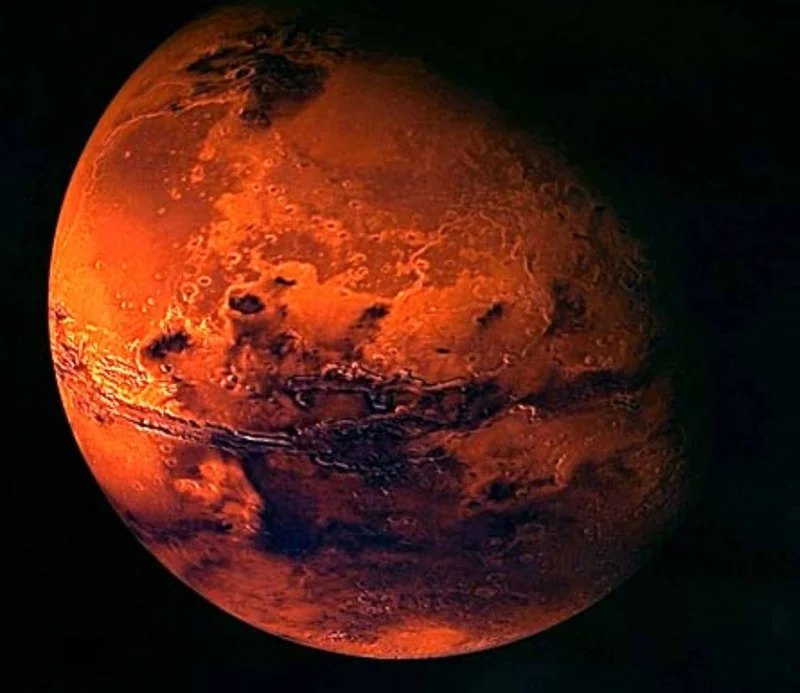Article Directory
Okay, buckle up, because this is HUGE.
We're talking about Mars. Not just as a desolate, dusty rock, but as a potential cradle of life – past, present, and future. Recent findings are turning everything we thought we knew about the Red Planet on its head, and honestly, it's the kind of thing that makes you want to stay up all night, sketching out possibilities on a napkin.
The narrative we've all heard is that Mars was once warm and wet, then dried up and died. End of story, right? Wrong! A new study from NYU Abu Dhabi has found evidence that water flowed underneath Martian sand dunes for far longer than anyone suspected. Water, trickling and seeping, creating these little, protected micro-environments. Think of it like finding hidden oases in the desert, but on another planet.
That initial discovery of subsurface water is amazing, but what does that mean?
A Living Library
The implications here are staggering. Dimitra Atri, the lead investigator, put it perfectly: "Mars didn't simply go from wet to dry. Even after its lakes and rivers disappeared, small amounts of water continued to move underground, creating protected environments that could have supported microscopic life." It's like discovering a hidden library of potential life, written in mineral ink.
And get this: these minerals, like gypsum, can trap and preserve organic material. That makes them prime targets for future missions looking for signs of ancient life. It’s not just about finding fossils; it’s about finding the story of life on Mars, potentially preserved in these underground time capsules.
But it doesn't stop there. NASA’s Perseverance rover has been sending back some intriguing data of its own. It just found a weird, shiny rock – nicknamed "Phippsaksla" – that's likely a meteorite with high levels of iron and nickel. Now, I know what you're thinking: "Okay, cool rock. So what?"
But the location of this meteorite is what’s interesting. It is perched on impact-formed bedrock outside Jezero Crater. What clues can we derive from this? It's like finding a message in a bottle washed up on the shore – a piece of the early solar system, delivered right to our doorstep.
Now, let's throw in another piece of the puzzle: extremophiles. These are microorganisms that thrive in extreme conditions here on Earth – boiling hot springs, frozen deserts, highly acidic environments. And scientists are increasingly looking at their potential role in terraforming Mars – that is, making it habitable for humans.
Think of Deinococcus radiodurans, a bacterium that can survive insane doses of radiation. Or cyanobacteria, which can fix carbon and nitrogen from the atmosphere. Or even melanized fungi, which can withstand extreme cold and UV radiation.

These aren't just interesting organisms; they're potential tools. As the study "The role of extremophile microbiomes in terraforming Mars" points out, these microbes could be used for In-Situ Resource Utilization (ISRU) – basically, using Martian resources to create a life-supporting environment.
It's like the first farmers arriving in a new land, bringing with them the seeds to transform it.
NASA's Mars Sample Return (MSR) mission is in a bit of a precarious position. There's a risk that the mission could be cancelled, leaving those precious samples on Mars. But, what if the MSR mission is successful?
Perseverance has already collected some amazing samples, including one from a rock called Cheyava Falls. This rock has our first confident detection of organic matter. This is an exciting discovery, but the mission may get cancelled.
And that's where things get really interesting. Because even if Mars is currently inhospitable on the surface, these underground environments could provide a refuge for life – either native Martian life or terrestrial microbes that we bring with us.
What if, instead of just looking for past life, we start cultivating future life? What if we use these extremophiles to create self-sustaining ecosystems in underground habitats, shielded from the harsh radiation and temperature fluctuations? We could literally be seeding a second genesis.
What does this mean for us?
The potential to transform another planet, to create a second home for humanity. It's a challenge, absolutely, but it's also an opportunity to push the boundaries of science, technology, and human ingenuity. To me, this is the kind of breakthrough that reminds me why I got into this field in the first place.
But with this power comes responsibility. We need to be incredibly careful about planetary protection, about not contaminating Mars with terrestrial life before we can fully understand its own potential. We need to consider the ethical implications of terraforming, of potentially altering an alien world. It's a huge burden, but also a huge privilege.
There is a huge amount of excitement about the potential for Mars. One commenter on Reddit said, "I never thought I'd see the day when we were seriously talking about terraforming another planet. It's like something out of science fiction!"
Mars: The Ultimate Petri Dish?
This isn't just about Mars. It's about our place in the universe. It's about whether we're alone, and if we're not, what our responsibility is to other potential life forms. It's about whether we can overcome the challenges facing our own planet by learning to live sustainably on another. It's about whether we, as a species, are capable of reaching for the stars, not just with our rockets, but with our hearts and minds.
